Bob Atchison - The Alexander Palace Time Machine Blog
The Feodorovskaya Icon of the Mother of God
In the 1930's people came from all over the world to see the Alexander Palace and the rooms where the last Tsar and his tragic family lived. Tourists reported one of the 'must see' places in the palace was the icon wall in the Imperial bedroom. Over 300 icons hung here, many covered with silver, pearls and gemstones. There were rare, ancient ikons and others that were painted in the last years of the Empire. Some were by famous Russian artists, others were painted by humble monks and nuns. Two beautiful ikon lamps with hanging gemstones illuminated the icons. These lamps were lit with rose-scented olive oil. Twenty years after the Romanovs were sent into Siberian exile and death you could still smell roses in this room and this made the room feel haunted.Alexandra had a small private chapel on the left side of the bed and here she kept more ikons, books and other religious items. She would pray long, solitary hours on her knees pleading for the life of the Tsarevich Alexis and for God to protect of her husband and family from their many enemies.
In the time of the Romanovs there were far fewer ikons here. After the Revolution museum workers tried to save ikons from other rooms in the palace, particularly the children's quarters, by moving them here. During the 20s and 30s the Soviet goverment sold off hundreds of items belonging to the Imperial family to raise hard currency to finance foriegn communist parties and a network of international spies and agents. Many of the Imperial family's icons were lost at this time.
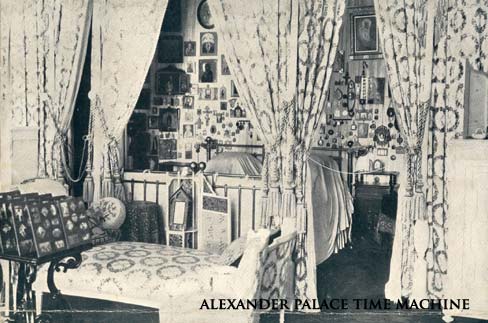
Above: the Imperial bedroom in the earlty 1920's. This picture was provided by Alexandra Grabbe.
The back wall was hung with pink silk and lace. At the top was a big ikon of the Feodorovskaya Mother of God. This ikon was discovered in 1239 by Vasily Kvashnya, Prince of Kostroma, while he was hunting. It was discovered in the Church of St. Feodor Stratilates and brought to the Ipatiev Monastery in Kostroma. The first Romanov ruler of Russia, Michael, prayed befoire this icon at the time of his election to the throne and henceforth it became a symbol of the Romanov family and the crown itself.
The original icon is primitive and creates a strong impression. I still have a difficult time understanding this icon and its harsh features. Believe it or not, it is a variant of the famous Virgin of Vladmir, that famous, beautiful image of the Vigin of tenderness. Here we see one leg of the child is uncovered and the Vigin presses her cheek to Christ's face. Over trhe yearas artists have tried to soften the features of this icon and make it more attractive (see below). Many copies of this icon were made for the Imperial family. When Alexandra came to the Alexander Palace she brought a few western religious paintings and a collection of crosses. One of the first icons she hung in the bedroom was of the Feodorovskaya. At some point she was also given the huge, silver and enamel encrusted copy that hung in the center. During WWII this ikon vanished but it was recently rediscoved and brought to the nearby Feodorovsky Cathedral, which was dedicated to this icon.
Below are a number of versions of the icon. The first one is a small one from Alexandra's bedroom.
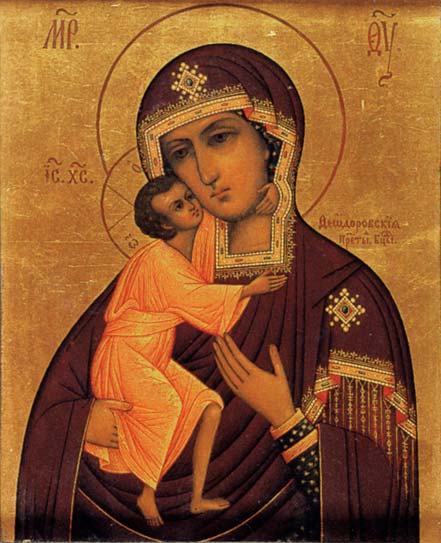
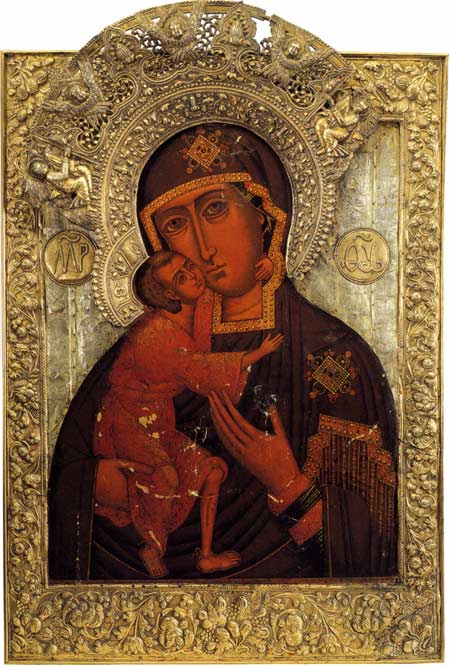
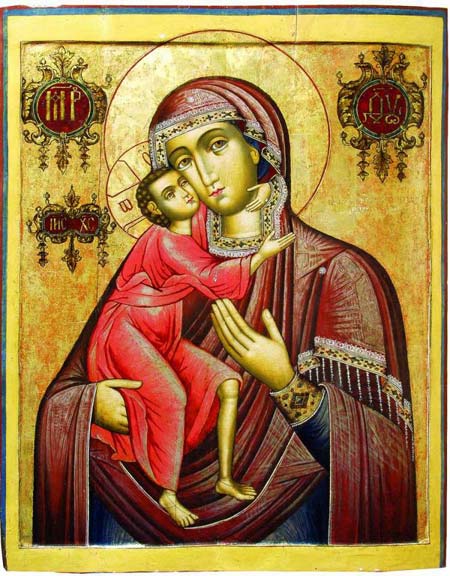
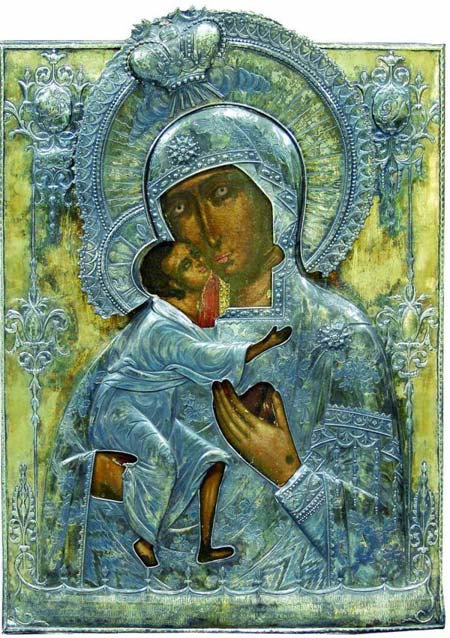
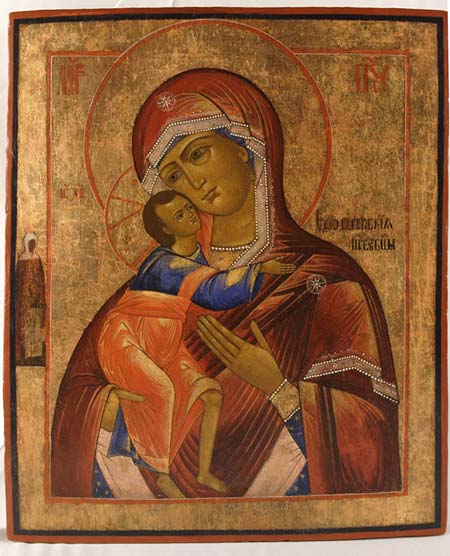
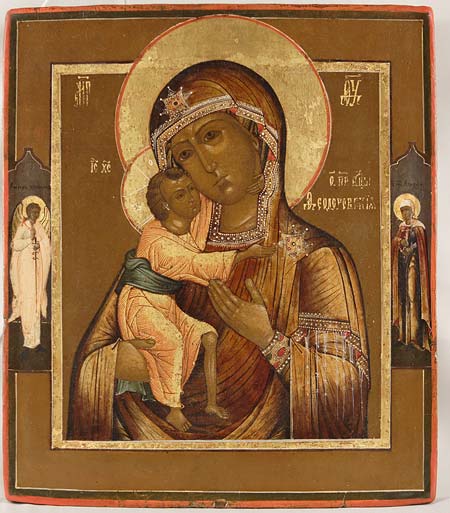
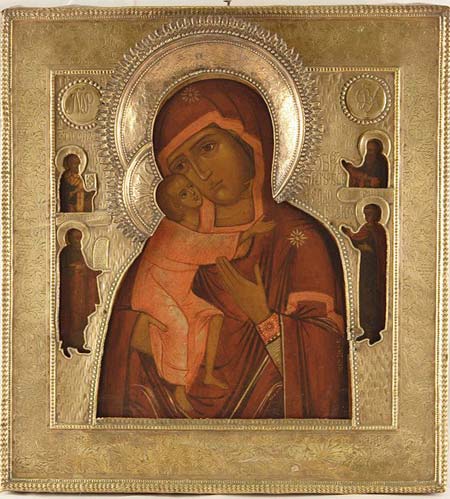
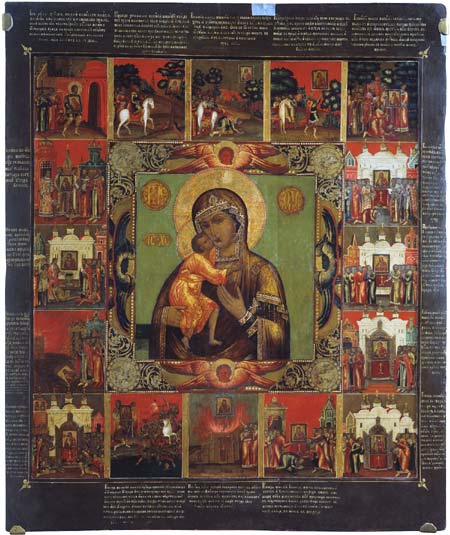
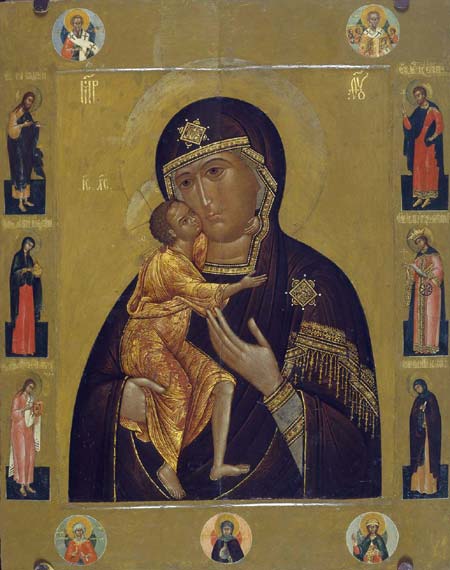
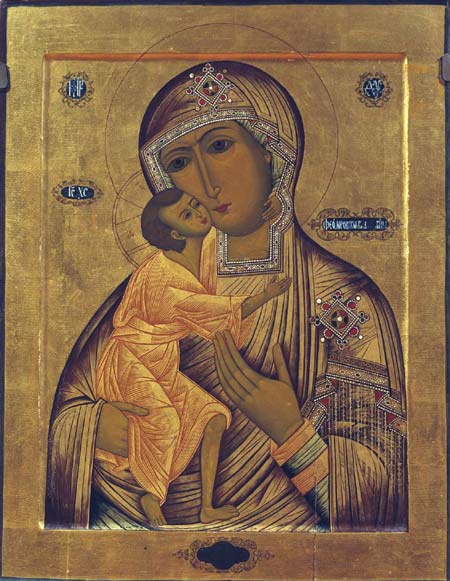
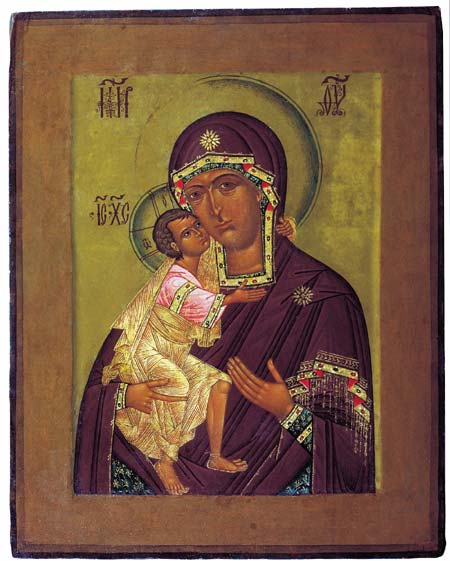
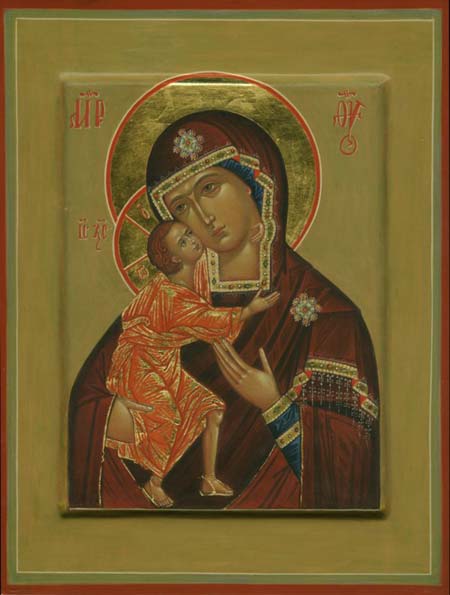
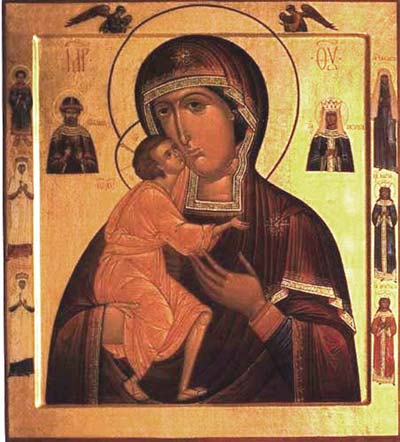
The back wall was hung with pink silk and lace. At the top was a big ikon of the Feodorovskaya Mother of God. This ikon was discovered in 1239 by Vasily Kvashnya, Prince of Kostroma, while he was hunting. It was discovered in the Church of St. Feodor Stratilates and brought to the Ipatiev Monastery in Kostroma. The first Romanov ruler of Russia, Michael, prayed befoire this icon at the time of his election to the throne and henceforth it became a symbol of the Romanov family and the crown itself.
The original icon is primitive and creates a strong impression. I still have a difficult time understanding this icon and its harsh features. Believe it or not, it is a variant of the famous Virgin of Vladmir, that famous, beautiful image of the Vigin of tenderness. Here we see one leg of the child is uncovered and the Vigin presses her cheek to Christ's face. Over trhe yearas artists have tried to soften the features of this icon and make it more attractive (see below). Many copies of this icon were made for the Imperial family. When Alexandra came to the Alexander Palace she brought a few western religious paintings and a collection of crosses. One of the first icons she hung in the bedroom was of the Feodorovskaya. At some point she was also given the huge, silver and enamel encrusted copy that hung in the center. During WWII this ikon vanished but it was recently rediscoved and brought to the nearby Feodorovsky Cathedral, which was dedicated to this icon.
Below are a number of versions of the icon. The first one is a small one from Alexandra's bedroom.



















 Imperial Bedroom
Imperial Bedroom Portrait Hall
Portrait Hall Mauve Room
Mauve Room Maple Room
Maple Room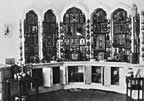 Aleksey's Bedroom
Aleksey's Bedroom Nicholas's Study
Nicholas's Study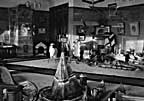 Aleksey's Playroom
Aleksey's Playroom Formal Reception
Formal Reception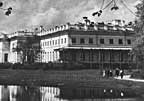 Balcony View
Balcony View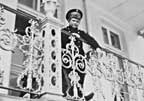 Aleksey- Balcony
Aleksey- Balcony Children-Mauve
Children-Mauve Nicholas's Bathroom
Nicholas's Bathroom Alexandra- Mauve
Alexandra- Mauve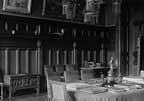 Nicholas's Reception
Nicholas's Reception Tsarskoe Selo Map
Tsarskoe Selo Map